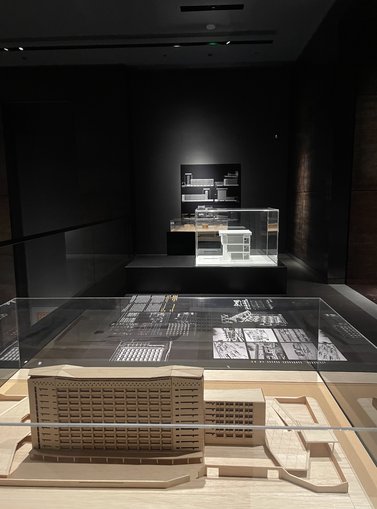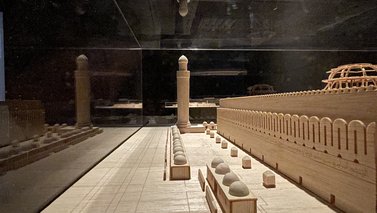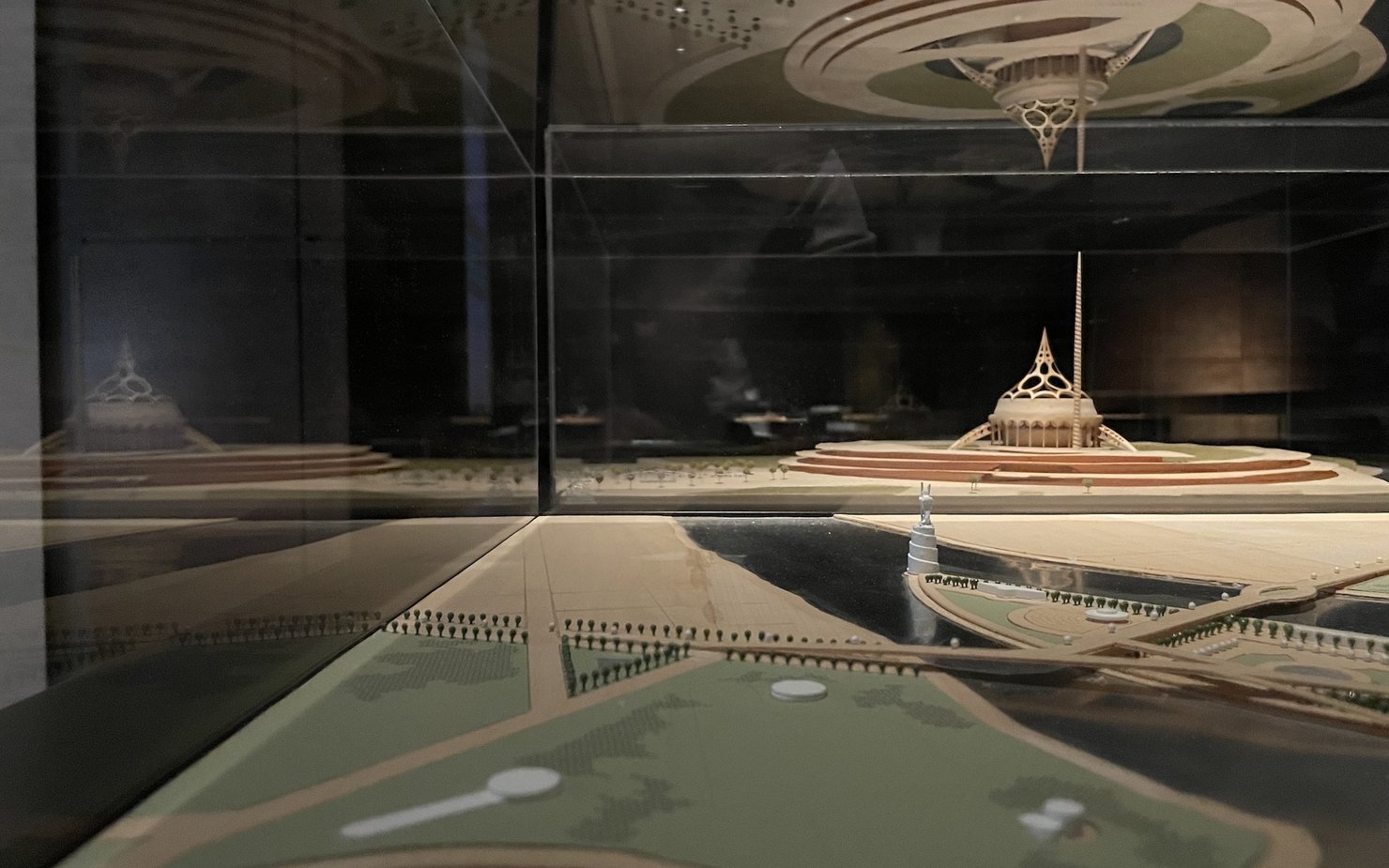This exhibition highlights the architectural projects envisioned in the 1950s, and the 1980s, during the reign of King Faisal II and Saddam Hussein’s presidency, respectively. Both these decades carry great historical significance for the architectural history of the city. They mark periods when some of the most influential architects of their respective eras, like Frank Lloyd Wright, Le Corbusier, Robert Venturi and Ricardo Bofill worked in the Iraqi capital. Due to the political history in Iraq since the end of the fifties, most of these projects had been forgotten outside Iraq until quite recently. However, they offer an image of Baghdad, its life and energy, that differs from more recent ones of destruction and reclusion.
City of Mirage traces the historical significance of three decades of architectural projects in Baghdad. Located on the fourth floor, this traveling exhibition complements Baghdad: Eye’s Delight, a celebration of Iraq’s influential capital, one of the most important cities in the Islamic world.

Model of Giò Ponti: The Development Board Building, 1957-1963

Model of Robert Venturi, Denise Scott Brown & John Raunch: Proposal for the Competition of the National Mosque (Friday Mosque), Baghdad, 1982
The exhibition, curated by Professor Pedro Azara, was organized by the Barcelona Delegation of the Col. d’Arquitectes de Catalunya (COAC) in Barcelona in 2012 and then became a traveling exhibition that has been displayed in New York, Boston (MIT), Ramallah and Baghdad.
